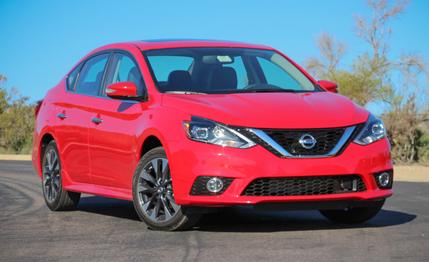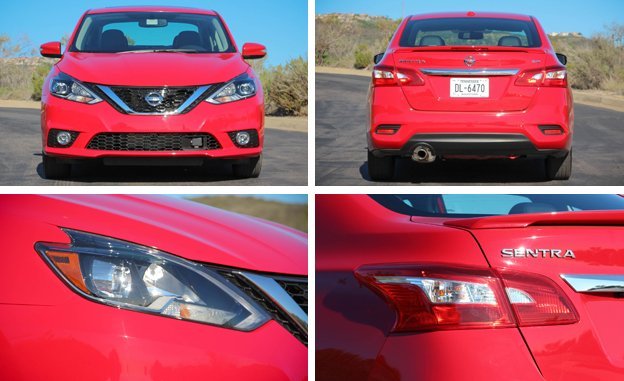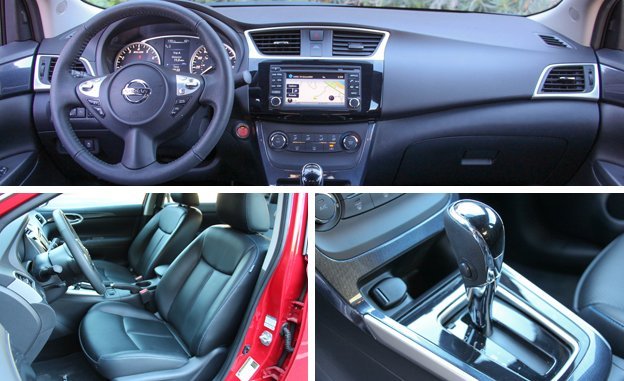
 First Drive Review
First Drive Review
With some 4 million sold in the U.S. alone, the Nissan Sentra is the definition of ubiquitous, and for most of its history, it was a simple and indestructible beater—with a huge 93 percent of post-2005 U.S. models still on the road today, according to Nissan. But my how it’s grown, as have its primary competitors, namely the Toyota Corolla and Honda Civic. Unlike the carefree, ride-’em-hard Sentras of yore, today’s version is no longer Nissan’s entry-level model, having ceded that position long ago to the Versa. As such, the Sentra no longer can get away with being basic, so Nissan turned the seventh-generation car into into a mini-Altima when it was introduced for 2013.
Like the Altima, the Sentra received an extensive mid-cycle redo for 2016 to visually align the whole sedan family with Nissan’s bolder new look established by the 2016 Maxima. Everything from the A-pillars forward—the front fenders, headlamps, hood, and fascia—is new and, in most respects, improved. Out back, the rear bumper is fresh, as are the taillamps, which ditch the dazzling, all-LED treatment (which we considered a bit pretentious back in 2013) for a rather less interesting combination lamp containing one arching LED light tube and one traditional bulb. The wheel designs are new, as well, with the fluted 17-inchers on our red Sentra SR test car looking particularly slick.


In an effort to class up the dowdy interior, Nissan changed the trim pieces on the center stack, the console, and the doors, and it swapped in the three-spoke steering-wheel design from the 370Z. All but the base S and FE+S trim levels also get new gauges flanking a vertical center screen with multiple information displays. A new shift lever for the continuously variable automatic transmission also enters the picture, although there’s still no separate gate for manual “gear” control.
Loping around Orange County, California, on our preview drive, we experienced a Sentra that felt more mature than ever. The slow steering still requires a fair amount of input before much turning happens and is just as lazy to self-center after exiting a corner, but at least the new bearings and remapped electric power assist yield more directness on the highway. Also appreciable at freeway speeds is the 2016 Sentra’s retuned suspension, which transmits road impacts crisply yet calmly, courtesy of 10-percent-stiffer springs and retuned shocks. More sound insulation was added to the dash and doors, and the engine mounts were tweaked to transmit less noise into the cabin. Nissan claims that the Sentra grips the road better at the limit and has less body motion on rough roads, but our lazy drive during the press event gave us little opportunity to verify those assertions. To measure its progress, however, we did take a refresher spin in a 2015 model, which felt less precise, shuddered over bumps, and made much more of a ruckus the whole time.


The quieter ride, however, allows the droning, 130-hp 1.8-liter four-cylinder engine to be heard that much more clearly, despite the CVT being reprogrammed to mimic a rather slurry conventional automatic when the accelerator is pressed beyond a quarter of its travel. And the car is still slow. Not in that charming, c’mon little guy! way of vintage Sentras, but rather a recalcitrant, ugh, I wish I hadn’t asked kind of slow. The last time we tested the Sentra, it posted a 9.2-second zero-to-60-mph time, and given the 2016 model’s identical engine output, we don’t expect any improvement this time around.
The 2016 Sentra already is on sale, starting at $17,615 for a base S model with the manual transmission (the only trim level that offers a stick) and rising to the $23,005 for the top-dog SL model, with three other trim levels in between. The one-rung-down SR test car we drove at the preview event brings sporty-ish styling and a decent level of standard equipment for its $21,245 starting price, but it stickered for $25,245 once the $2590 SR Premium package (leather seats, Bose audio, sunroof, navigation, etc.) and $1230 Technology package (adaptive cruise control, automatic braking, and Nissan Connect services) were added. That’s not disposable-car money, but for a car that has stepped up as much as the Sentra has in quality and refinement, it seems a fair price.
We’re not sure that 2016 Sentra customers will get nostalgic for their cars in, say, 2046, the way we are about Sentras of the 1980s. But if past is prologue, there should be no shortage of used Sentras on the market if they do.